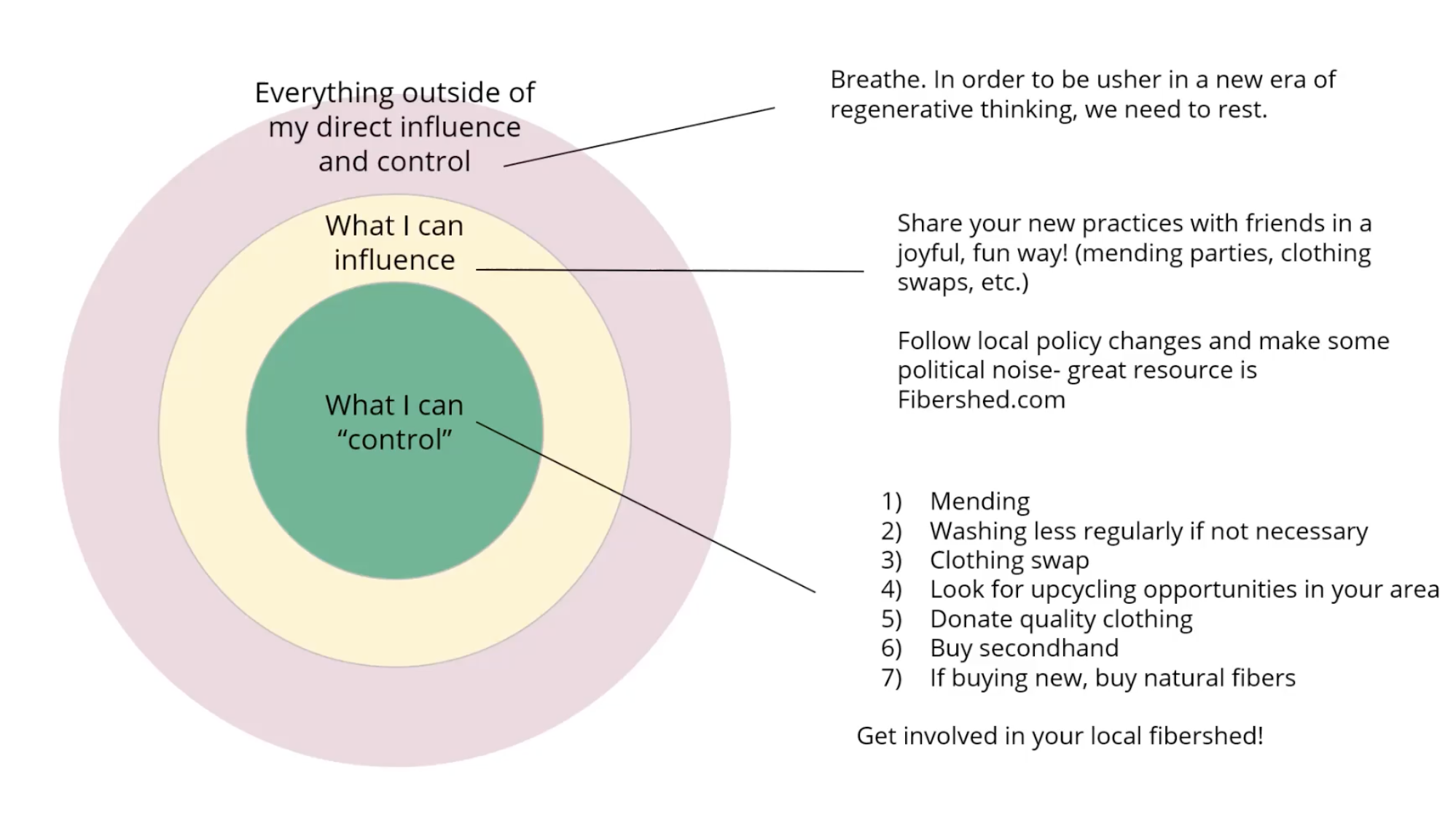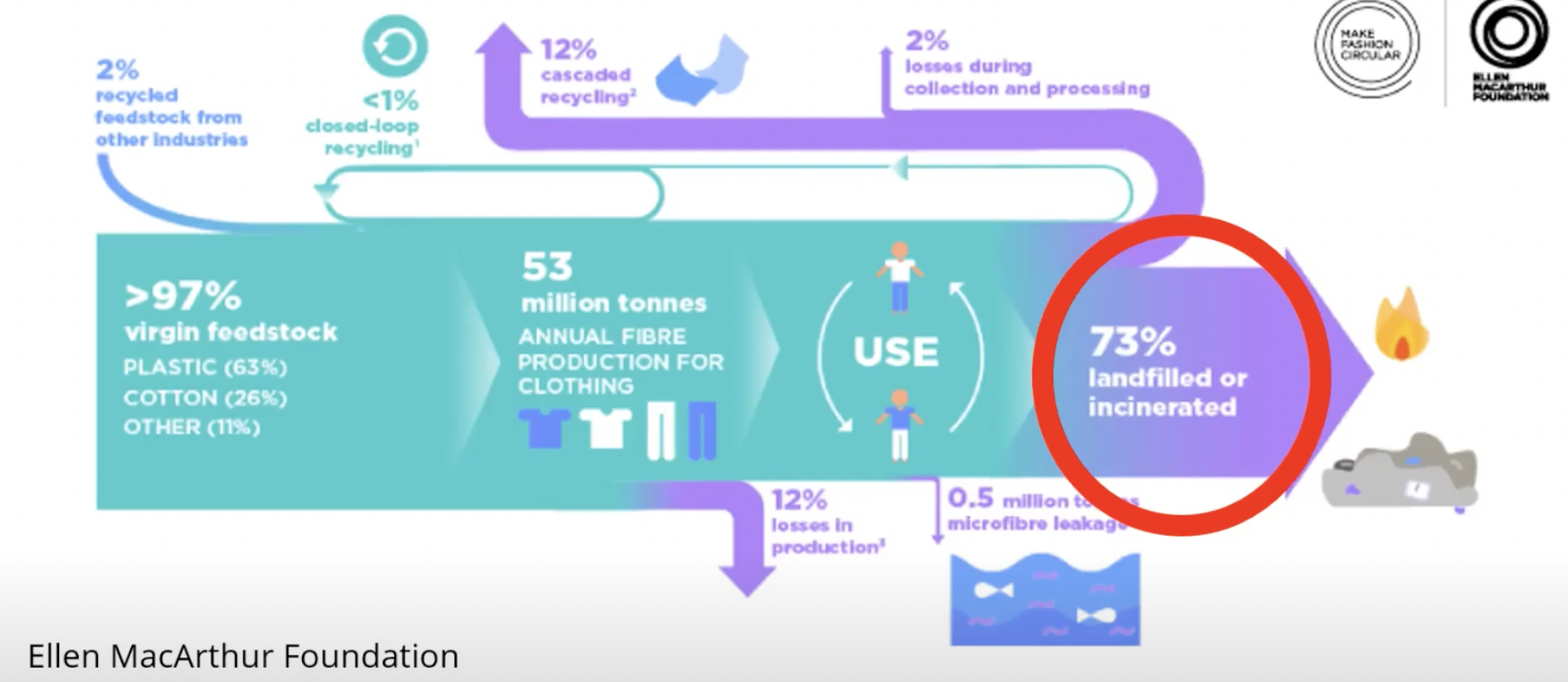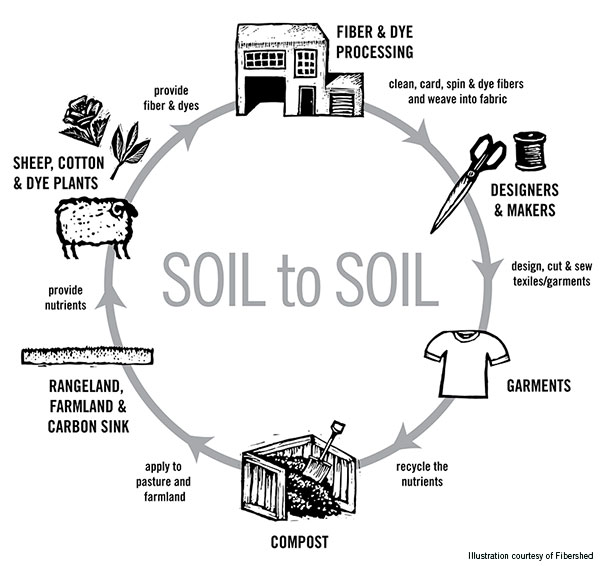The statewide plastics campaign kicked off the year with a presentation hosted by Jess Boeke and Sarah Pottle from Rust Belt Fibershed, we wanted to share resources from our webinar covering the topic of plastics and textiles.
Here is a link to the January 24th webinar recording 1 & recording 2. Note: due to a technical glitch there are two recordings, the first video covers the first eight minutes of the presentation and the second covers the remainder of the webinar. The following includes main take-aways from the webinar.
What clothes are ‘best’ to wear and purchase?
- The ones you already have!
- Do the best you can with the resources you have.
- Reduce microfibers from entering waterways and the atmosphere by washing your clothes less often, spot clean as needed, and air dry clothing. Mend and patch to extend the life of clothing.
- Have a clothing swap with friends and neighbors!
- Buy less, skip the trendy fast fashion! Think about purchasing high quality and lasting items, similar to heirlooms that can be passed on to loved ones.
- Buy pre-owned clothing, sourced from local stores.
- Purchase clothing made of natural fibers. Avoid petroleum-based fabrics such as nylon, polyester, and fleece.
- Get involved in your local fibershed community!
- Be aware that clothing marked as stain-resistant or waterproof is often treated with fluorochemicals, formaldehyde, or other toxic chemicals. Clothing, particularly petroleum based, is often treated with flame retardant chemicals (PFAS). Your skin is a permeable organ that is being exposed daily to these harmful chemicals.
- Donate quality clothing. Do not donate torn, soiled clothing that cannot be worn and will ultimately burden others.
- Look for upcycling opportunities in your area or find a use for items that can not be donated.
In Ohio we are lucky to have five fibersheds, follow the links below to find one near you!
Rust Belt Fibershed
Southeast Ohio Fibershed
Central Appalachia Fibershed
Miami Valley Fibershed
Great Lake Fibershed

Fibershed is a geographical landscape that provides the resources and infrastructure to create local fabric (local fiber, local dyes, local labor).
Rust Belt Fibershed includes a 250 mile radius outside of Cleveland, Ohio including parts of Michigan, southern Ohio, Western Pennsylvania and Western New York. The goal is to build a community that collaboratively supports locally grown textiles in a way that decreases consumption of fast fashion and works to restore the soil. Rust Belt Fibershed aspires to connect everyone in all parts of our local fiber system: farmers, fiber processors–from large mills to home spinners, weavers, dyers and fiber artists–to designers, shop owners, consumers, and fiber enthusiasts. Through their efforts they hope to foster friendship, creativity, and a greater respect for our environment, as well as an understanding of the impact we share in our corner of the world.

We must move away from a traditional linear system- based on extraction practices which is a system that thrives on more and faster, on unsustainable use of resources, we often lose the connection with the land, each other, our values, and even ourselves. Each point in the linear system is designed to be siloed, moving in one direction with the end of life clothing ending up in one place- the incinerator or the landfill.
Textiles made from plastic fibers are responsible for microplastic shedding at every stage of their life: when they’re worn, when they’re washed, and when they’re disposed of.
An estimated 92 million tons of fast fashion waste is generated yearly, the textiles are not biodegradable and the chemicals and dyes in the fabric are harmful to the soil and water! In the Atacama Desert, entire landscapes are now covered by new and old garments. Every year, some 59,000 tons of used and unsold clothing end up in Chile from all over the world. Watch the video here!
Instead we need to pause, think through the cause and effect of the linear system, and move to a circular system. A more sustainable, circular economy that allows for the inclusion of creative ideas, alternative means of production, local labor, local resources, place-based clothing, beneficial textiles, and a system that values people and not abundance.
Get involved with Rust Belt Fibershed:
CLOSET SURVEY FOR CLIMATE HEALTH
